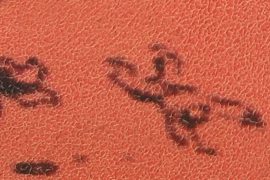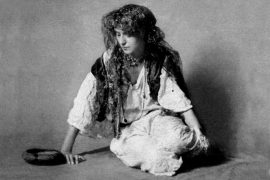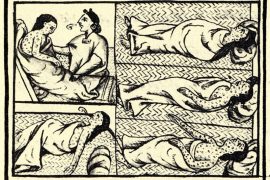Colours strike different emotions in people. For some, the colour yellow may be very pleasant. Perhaps, it may stand for happiness. But for others, yellow could signify unpleasantness. It may even upset them. Of course, much of it depends on the perception of the person. And if you know how the colour yellow was produced in India, it may evoke disgust.
Indian yellow is said to have been brought to India by the Persians in the fifteenth century. It was used in paintings during the Mughal era. From here, it went to Europe. Persian yellow, however, is said to be made of saffron flowers. But Indians chose to exploit cows to produce the colour.
We did not know how the colour was produced until the nineteenth century. And then the secret was revealed: it was cow urine. Cows were fed only mango leaves their entire lives such that they gave out urine that was saffron in colour.
Once all the urine was collected, it was heated and made into round balls. This was called ‘piuri.’ The cows that produced the urine were severely underfed. They barely had normal fodder served to them. The dairy farmers who produced the pigment said they were producing anywhere between 1000 to 1500 pounds of pigment per year. But, the investigator behind the pigment assumed it to be much less, considering the number of cows involved.
So what triggered the investigation? In the 1800s, Indian yellow was a screaming colour. Several artists – from Joshua Reynolds to Van Gogh – used Indian yellow in their paintings. In his most recognised painting, Starry Night, Van Gogh uses yellow to depict stars. In The Age of Innocence by Joshua Reynolds, the girl who sits looking sideways has a noticeable pigment of Indian yellow.
J.M.W Turner used Indian yellow the most. He used it so extensively that the colour came to be known as ‘Turner’s yellow.’ One can see it in The Slave Ship, The Burning of the House of Lords and Commons, and Sunrise With Sea Monsters.
The odour the pigment gave out was strange and unpleasant. There were rumours that it came from cow urine, but no one took it seriously. Merimee, a painter from the 1800s, wrote a book on painting. In it, he mentioned his disbelief regarding the rumours.
Another gentleman named George Field chose to take it a notch further – he thought it was not a cow, but camel urine instead. Then, finally, the Journal of the Society of Arts in London sent an investigator in 1886 to find out.
In his quest for truth, this investigator found himself in Bengal in the city of Monghyr. And he discovered that the rumours were true. The underfed cows indeed existed and, sadly, were exploited to produce Indian yellow. But the other dairy farmers disliked them and limited their production. Maybe that was why the cows were so few.
It was thus that myth turned out to be an ugly reality. In the early twentieth century, making the colour was prohibited by law. Could it be because the British did not like harming animals? Or was it because the Indians considered the cow to be sacred? Could it also be because of commercial reasons, given the political atmosphere at the time?
The most plausible answer is – all of the above. Either way, cows were not to be harmed. This made the paintings of the nineteenth century unique in that they used a colour that was no longer available.
Now, the Indian yellow available in the markets is made synthetically. They are almost, if not entirely, identical to the one made earlier. In this respect, one can say that the paintings of the nineteenth century are no longer unique. Or maybe they are because they used the original Indian yellow made from cow urine?
-30-
Copyright©Madras Courier, All Rights Reserved. You may share using our article tools. Please don't cut articles from madrascourier.com and redistribute by email, post to the web, mobile phone or social media.Please send in your feed back and comments to [email protected]











